Hyundai i10 vs Peugeot 3008 – Which model is better for everyday use?
Everyday use, family trips or long-distance drives – here’s where the differences show.
Discover whether Hyundai i10 or Peugeot 3008 fits your lifestyle better.
Costs and Efficiency:
Price and efficiency are often the first things buyers look at. Here it becomes clear which model has the long-term edge – whether at the pump, the plug, or in purchase price.
Hyundai i10 has a clearly advantage in terms of price – it starts at 14600 £, while the Peugeot 3008 costs 35100 £. That’s a price difference of around 20580 £.
Fuel consumption also shows a difference: Peugeot 3008 manages with 2.40 L and is therefore convincingly more efficient than the Hyundai i10 with 4.90 L. The difference is about 2.50 L per 100 km.
Engine and Performance:
Under the bonnet, it becomes clear which model is tuned for sportiness and which one takes the lead when you hit the accelerator.
When it comes to engine power, the Peugeot 3008 has a significantly edge – offering 325 HP compared to 90 HP. That’s roughly 235 HP more horsepower.
In acceleration from 0 to 100 km/h, the Peugeot 3008 is significantly quicker – completing the sprint in 6 s, while the Hyundai i10 takes 11.40 s. That’s about 5.40 s faster.
In terms of top speed, the Peugeot 3008 performs evident better – reaching 220 km/h, while the Hyundai i10 tops out at 175 km/h. The difference is around 45 km/h.
There’s also a difference in torque: Peugeot 3008 pulls decisively stronger with 511 Nm compared to 172 Nm. That’s about 339 Nm difference.
Space and Everyday Use:
Whether family car or daily driver – which one offers more room, flexibility and comfort?
Both vehicles offer seating for 5 people.
In curb weight, Hyundai i10 is decisively lighter – 996 kg compared to 1648 kg. The difference is around 652 kg.
In terms of boot space, the Peugeot 3008 offers convincingly more room – 520 L compared to 252 L. That’s a difference of about 268 L.
In maximum load capacity, the Peugeot 3008 performs clearly perceptible better – up to 1480 L, which is about 430 L more than the Hyundai i10.
When it comes to payload, Peugeot 3008 minimal takes the win – 467 kg compared to 423 kg. That’s a difference of about 44 kg.
Who wins the race?
The Peugeot 3008 proves to be outperforms in nearly all aspects and therefore becomes our DriveDuel Champion!
Peugeot 3008 is the better all-rounder in this comparison.
 @ Peugeot / Stellantis Media
@ Peugeot / Stellantis Media
Peugeot 3008
Hyundai i10
The Hyundai i10 is a cheeky city car that squeezes big-car confidence into a pocket-friendly package, carving through tight streets with surprising composure and sensible practicality. For buyers after low fuss, sensible equipment and wallet-friendly running costs, it's a smart, no-nonsense pick that makes sense whether you're a first-time driver or need a reliable second car.
details @ Hyundai Motor Company
@ Hyundai Motor Company
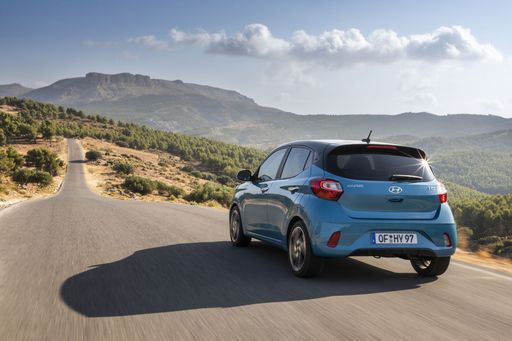 @ Hyundai Motor Company
@ Hyundai Motor Company
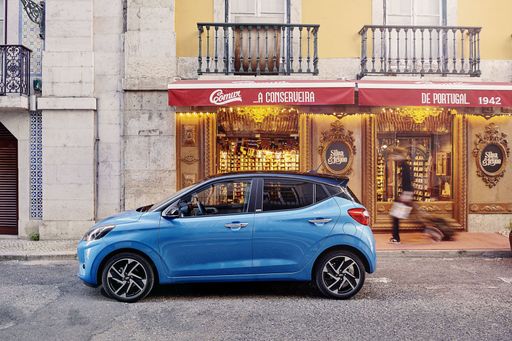 @ Hyundai Motor Company
@ Hyundai Motor Company
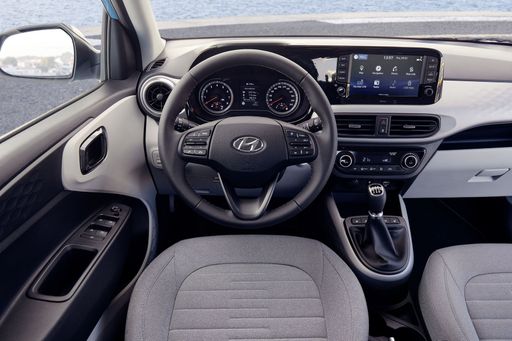 @ Hyundai Motor Company
@ Hyundai Motor Company
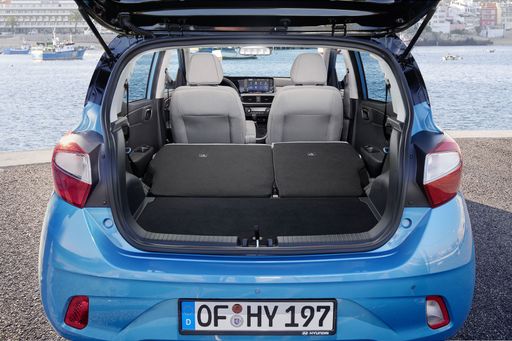 @ Hyundai Motor Company
@ Hyundai Motor Company
Peugeot 3008
The Peugeot 3008 blends bold French styling with a surprisingly grown-up interior that makes even dull commutes feel a little bit special. Practical enough for family life yet lively to drive, it’s a clever all‑rounder that stands out from the crossover crowd without shouting for attention.
details @ Peugeot / Stellantis Media
@ Peugeot / Stellantis Media
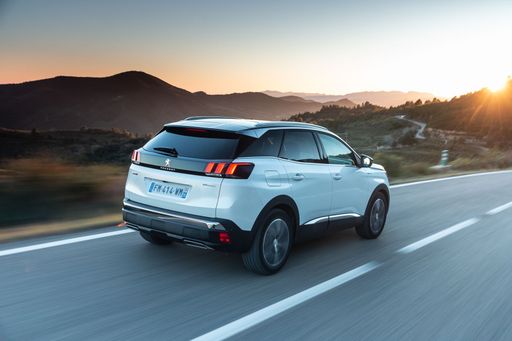 @ Peugeot / Stellantis Media
@ Peugeot / Stellantis Media
 @ Peugeot / Stellantis Media
@ Peugeot / Stellantis Media
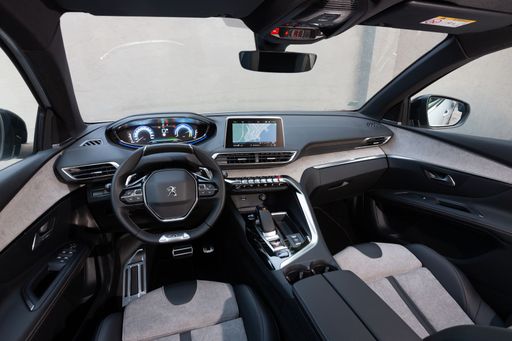 @ Peugeot / Stellantis Media
@ Peugeot / Stellantis Media
 @ Hyundai Motor Company
@ Hyundai Motor Company
|
 @ Peugeot / Stellantis Media
@ Peugeot / Stellantis Media
|
|
|
|
Costs and Consumption |
|
|---|---|
|
Price
14600 - 19000 £
|
Price
35100 - 52000 £
|
|
Consumption L/100km
4.9 - 5.5 L
|
Consumption L/100km
2.4 - 5.4 L
|
|
Consumption kWh/100km
-
|
Consumption kWh/100km
16.9 - 17.6 kWh
|
|
Electric Range
-
|
Electric Range
81 - 698 km
|
|
Battery Capacity
-
|
Battery Capacity
0.4 - 96.9 kWh
|
|
co2
110 - 124 g/km
|
co2
0 - 121 g/km
|
|
Fuel tank capacity
36 L
|
Fuel tank capacity
55 L
|
Dimensions and Body |
|
|---|---|
|
Body Type
Hatchback
|
Body Type
SUV
|
|
Seats
4 - 5
|
Seats
5
|
|
Doors
5
|
Doors
5
|
|
Curb weight
996 - 1099 kg
|
Curb weight
1648 - 2266 kg
|
|
Trunk capacity
252 L
|
Trunk capacity
470 - 520 L
|
|
Length
3670 - 3675 mm
|
Length
4542 mm
|
|
Width
1680 mm
|
Width
1895 mm
|
|
Height
1480 - 1483 mm
|
Height
1641 mm
|
|
Max trunk capacity
1050 L
|
Max trunk capacity
1430 - 1480 L
|
|
Payload
344 - 423 kg
|
Payload
432 - 467 kg
|
Engine and Performance |
|
|---|---|
|
Engine Type
Petrol
|
Engine Type
Electric, Petrol MHEV, Plugin Hybrid
|
|
Transmission
Manuel, Automatic
|
Transmission
Automatic
|
|
Transmission Detail
Manual Gearbox, Automated Manual
|
Transmission Detail
Reduction Gearbox, Dual-Clutch Automatic
|
|
Drive Type
Front-Wheel Drive
|
Drive Type
Front-Wheel Drive, All-Wheel Drive
|
|
Power HP
63 - 90 HP
|
Power HP
145 - 325 HP
|
|
Acceleration 0-100km/h
11.4 - 18.4 s
|
Acceleration 0-100km/h
6 - 10.2 s
|
|
Max Speed
143 - 175 km/h
|
Max Speed
170 - 220 km/h
|
|
Torque
93 - 172 Nm
|
Torque
230 - 511 Nm
|
|
Number of Cylinders
3 - 4
|
Number of Cylinders
3 - 4
|
|
Power kW
46 - 66 kW
|
Power kW
107 - 239 kW
|
|
Engine capacity
998 - 1197 cm3
|
Engine capacity
1199 - 1598 cm3
|
General |
|
|---|---|
|
Model Year
2024
|
Model Year
2024 - 2025
|
|
CO2 Efficiency Class
C, D
|
CO2 Efficiency Class
A, D, B
|
|
Brand
Hyundai
|
Brand
Peugeot
|
Is the Hyundai i10 offered with different drivetrains?
The Hyundai i10 is offered with Front-Wheel Drive.
The prices and data displayed are estimates based on German list prices and may vary by country. This information is not legally binding.
